Here you pick up signs to the Col de L’Iseran. Both the road and scenery begin to change. While Moncensio had been smooth, lush and easy to steer your way around, now the tarmac route up the D902 is craggier, steeper and much narrower.
With patchier road surface, and big scary drops if you look down, this French rocky mountain way is far more of a nail biter.
It’s late June but still there’s much snow at this altitude. The views are beyond spectacular. Watch out, though. As you wind through bend after bend, climbing ever higher, there’s often no barrier to stop you falling off the side. Yikes.
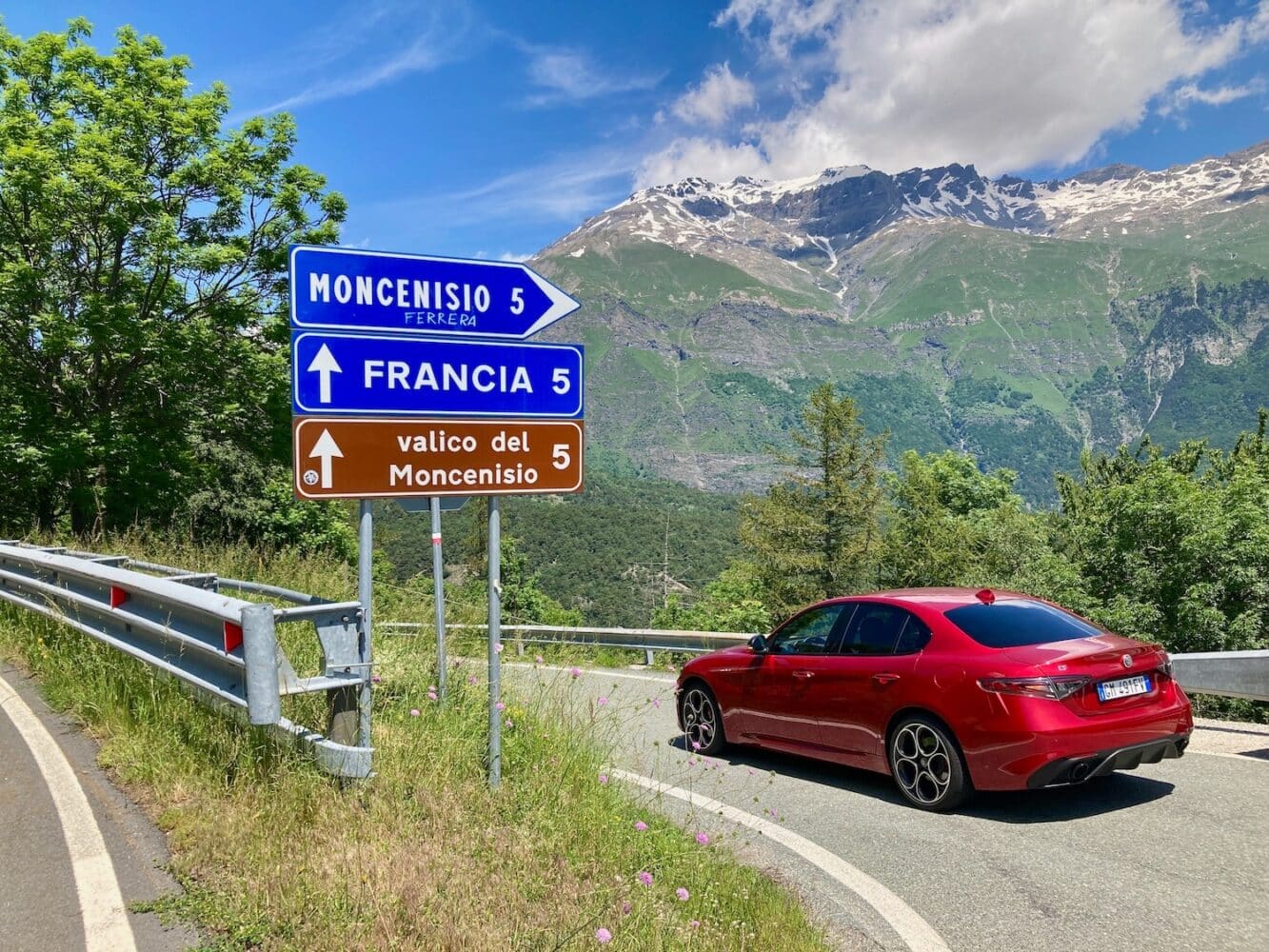
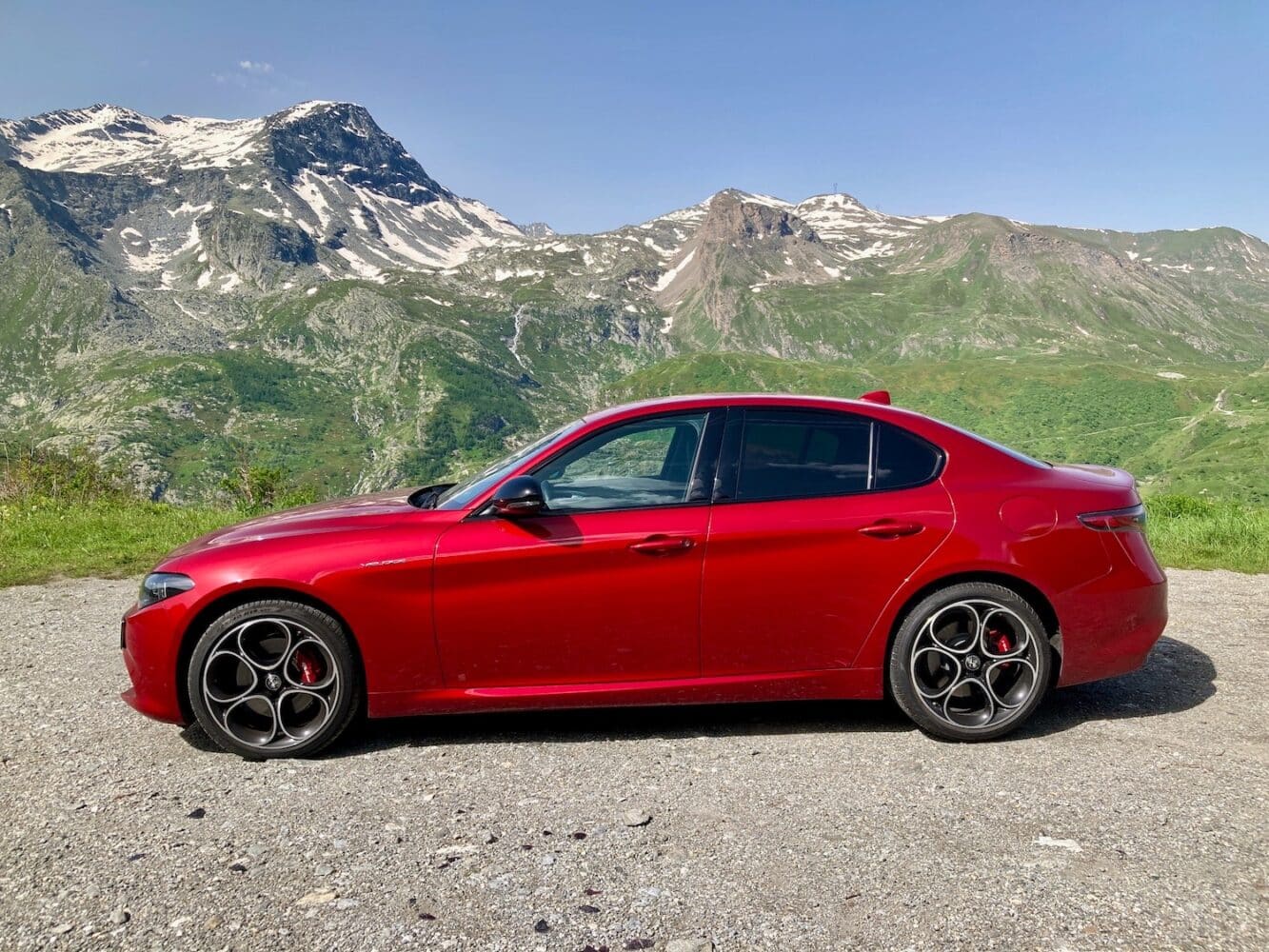
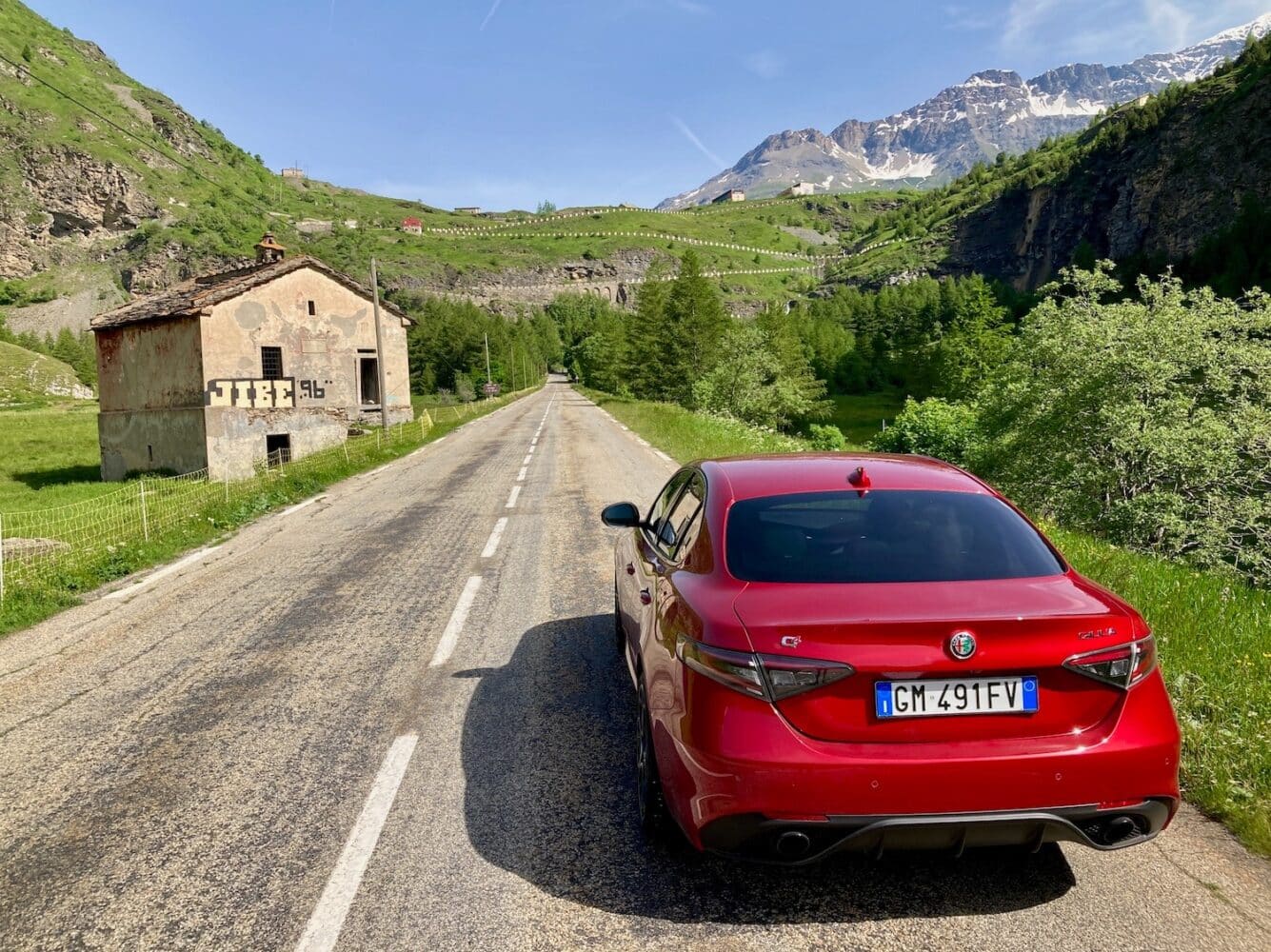

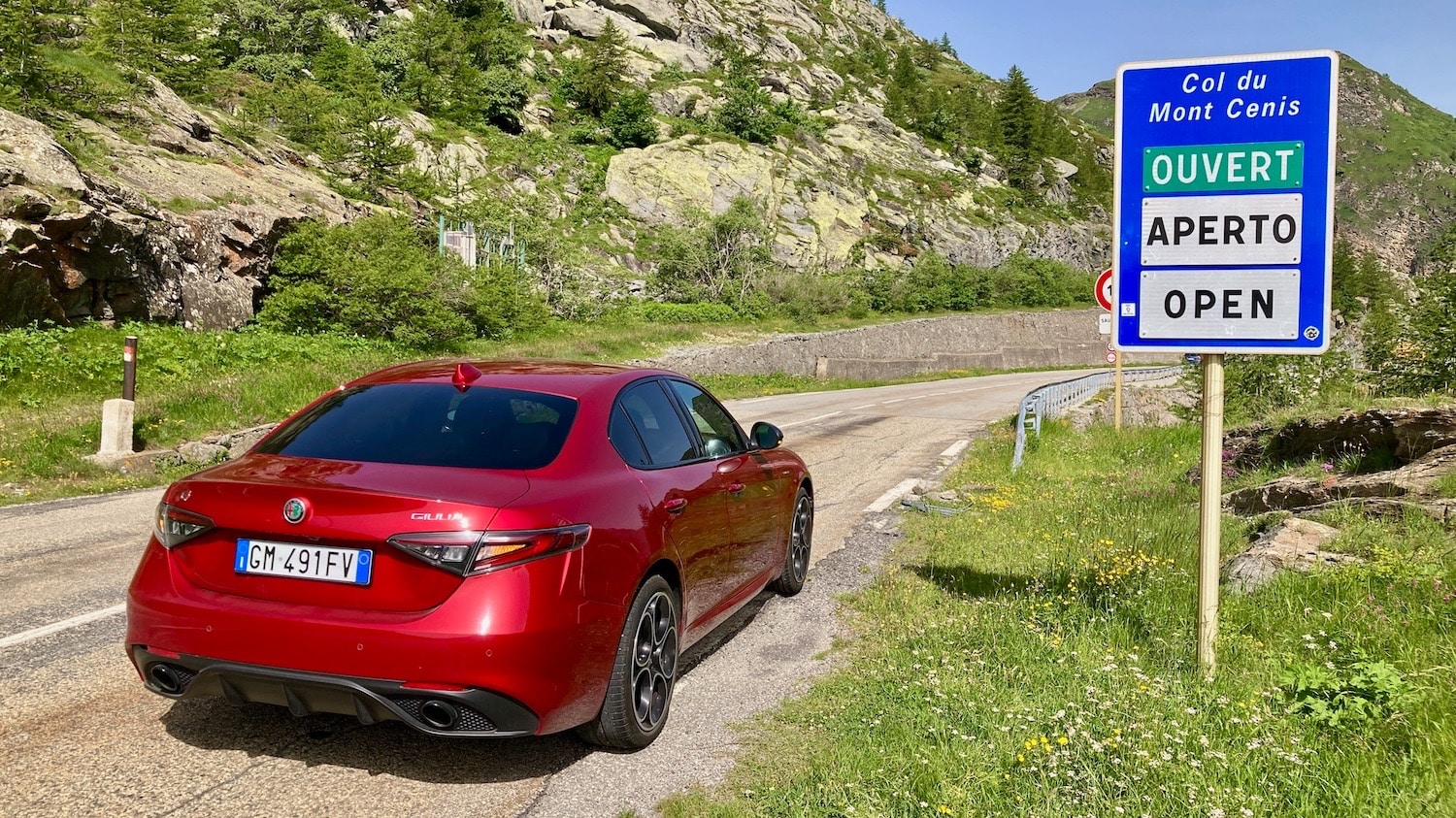
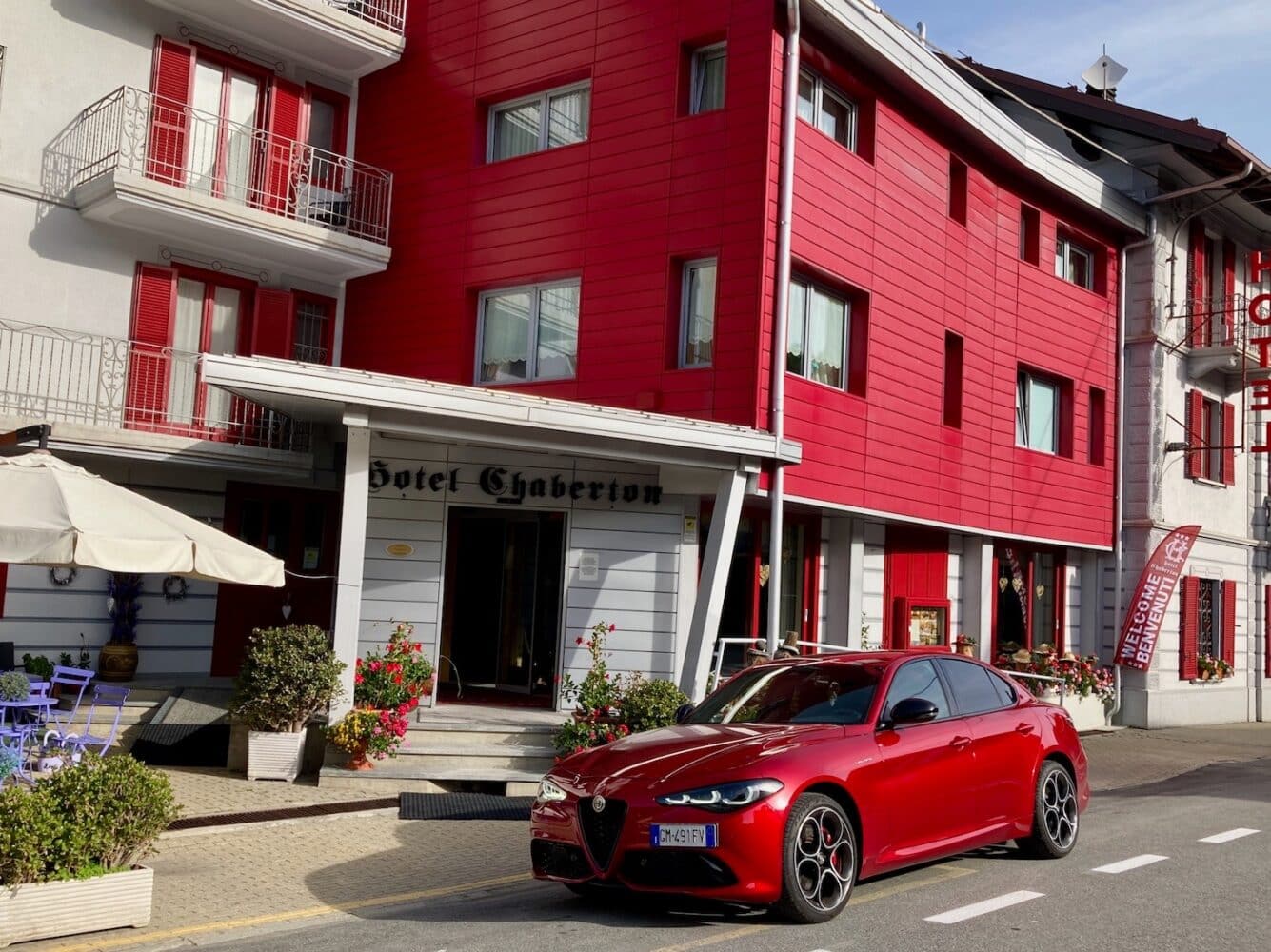
Eventually this rugged pathway navigates its way to the top at 2770 metres. Suddenly it’s like Glastonbury. Masses of people, bikers, cyclists jostle for the view and the chance to take their prized souvenir photo by the Col de L’Iseran sign right at the summit.
Starting in Turin and climbing its way up here, the Alfa Giulia Q4 has shown itself to be poised, sure footed, also smooth and refined.
Quite quick, too, as you might expect. Alfa claims a 0-62 mph time in just 5.2 secs, and there’s a 149 mph top end (on the autobahn, or race track, of course).
In practice, the Q4 bit, which adds 60 kgs to overall weight and can send up to 50 per cent drive to the compact front differential, brings a high level of stability.
As Alfa’s answer to the Audi Quattro system and BMW’s x-Drive, the Q4 set up is clearly very clever but it does subtly changes the car’s character, I found.
On a good testing road, despite quick steering, somehow you miss that final degree of driver involvement that you getfrom the excellent UK rear-drive Veloce.
Put that down to weight balance, I guess, with those extra kilos placed over the front wheels. The Giulia turns in cleanly, faithfully following your chosen line, no problem. Raise the ante (even in Dynamic mode which sharpens engine revs and shift action a touch) and it’s much the same.
Even then, there’s still not a whole lot of feedback or adjustability in play at the wheel, but probably only keen drivers/Alfisti die hards will pick up on this.
Time for my next mountain pass. Now I’m heading for the Petit Col du St Bernard (Colle del Piccolo St Bernard) by way of the famous ski resort of Val d’Isere. This might sound glamorous but today Val d’Isere is big on traffic calming, speed bumps and keenly enforced 30 km/h speed limits. So care is advised….
It’s said that that those fantastic opening shots of the Italian Job with the red Lamborghini Miura were filmed up here on the Col du Petit St Bernard.
I watched this 1969 caper movie classic again (it’s still hilarious) before I left. But today, those same Lambo locations are hard to trace.
The pass connects the Savoie region of France with Italy’s Aosta Valley and is another terrific and visually arresting drive, no question, with great natural beauty amid the many steep and challenging turns.
I get to the top (2188 metres) at 4.30 pm and would like to spend more time on this highly rated pass but the day is getting on and by the time I get to my overnight stay in Courmayeur I’ve been on the road for nine hours. Time for a break.
What follows should, in theory, be the highlight of this trip because I want to do the Great St Bernard pass again. Back in 1982, I did this super scenic route from Switzerland into Italy with my Alfa Romeo GTV 2000 coupe.
Now I am back for the first time in over 40 years and guess what, Mother Nature has decided otherwise and the day turns out to be miserable, cloudy and rainy.
This is the surprise I mentioned earlier. After three days of mountain driving in glorious sunshine, this drive up the Great St Bernard (Colle dell Gran San Bernardo) is not quite the glorious punch-the-air moment I’d anticipated.
It’s a short drive from Courmayeur to Aosta, then I begin the climb to the top. I stop for a cappuccino in a place called Gignod. The campsite we stayed in back in 1982 is still there and yes, the cappuccino is excellent.
A lesser-known mountain pass located in the French Alps, near the border with Italy. While it doesn’t have the same fame as its larger counterpart, the Col du Grand Saint Bernard, it offers a unique and scenic driving experience.
Key points about the Petit Col du St Bernard:
- Scenic Beauty: The pass is surrounded by stunning alpine landscapes, including towering mountains, lush forests, and picturesque valleys.
- Challenging Drive: The road is winding and steep, with several hairpin bends, making it a challenging but rewarding drive for experienced drivers.
- Historic Significance: The pass has a long history, dating back to Roman times. It was once a major trade route between Italy and France.
- Less Crowded: Compared to the Col du Grand Saint Bernard, the Petit Col is generally less crowded, offering a more peaceful and intimate experience.
If you’re looking for a scenic and challenging drive in the French Alps, the Petit Col du St Bernard is a hidden gem worth exploring.

